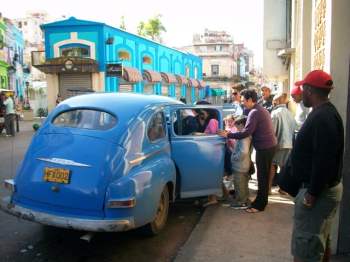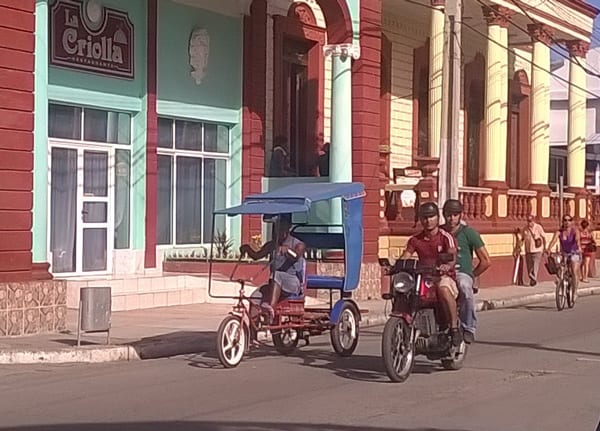Guantanamo’s Unconventional Taxi Service
By Alexander Londres

HAVANA TIMES — What are “almendrones” (literally large almonds)? Where did they come from and what have the conditions been to encourage their survival over all these years? Do they only exist in Havana or can they also be found in other Cuban cities?
If you ask any Cuban any of these questions, especially someone who lives in Havana, very few of them will hesitate to answer. What’s more, many of them could even write you a dissertation! Even a large number of visitors who live outside this city would be able to answer you correctly.
The almendrones are those ancient cars, the majority of which are Mercurys, Cadillacs, Fords or Chevrolets which were manufactured in the 1920s to the 1950s, imported from the US to the island. Thanks to the ingenuity of their owners and the creative talent of Cuban mechanics, we can still see them traveling around today, many as collective taxis contributing to alleviating the difficult public transport situation here, which has been negatively affected by the country’s critical economic situation for decades.
They are called almendrones even though they have nothing to do with the large almond fruit. Maybe they have earned this name because only their shell remains, the empty carcass of what they once were. They’re one thing on the outside, and a completely different thing on the inside. The slim chances Cuban citizens had to import original parts have converted them into hybrid vehicles, full of patches and grafts.
Those of us who live in the interior of the country and have visited other important cities on the island know that the almendron phenomenon isn’t exclusive to Havana, although it is more prominent there, as the capital is the most densely populated city in Cuba. These extremely old cars, of different makes and models, also endure in other city centers, dedicated to transporting people, covering pre-established routes or not, at a more or less fixed rate.
On the other side of the island, in Oriente, where the local population hasn’t been able to escape the problems of the vast depression of collective transport which affects people’s mobility, private alternatives have also gained prominence over the last few decades.
In Guantanamo, there is another kind of almendrones

They didn’t come from the US during Machado’s presidency and they don’t have four wheels. Although there are some almendrones which are already an icon of Havana, those in the far-east were brought over from countries in the old USSR, when the Soviet Bloc still existed.
They fall under the brands Jawa, Minsk, ETZ, MZ; plus the Suzuki which have recently come thanks to more flexible customs laws.
Guantanamo’s “almendrones” are motorbikes.
You don’t have to be from Guantanamo – not a resident or regular visitor – to be able to “go for a spin”. All you have to do is go to one of the busiest streets in the city and put your hand out standing on the kerb, and one of the nearest motorcycles, which provides this service, will stop for you. For 10 or 20 Cuban pesos (CUP) – depending on the time and place – you can go wherever you want.
And it’s not because almendrones have undergone some kind of Transformer-like metamorphosis when going from Havana to Guantanamo. It must have occurred to one great thinker around here to put into practice an idea which was born in the neighboring city Santiango de Cuba – which because it is a city situated between hills, has found that motorcycles are a more viable mode of transport. To use the great number of privately-owned motorbikes that are found here for commercial purposes, seeing as the car fleet wasn’t enough or wasn’t the best option for the business (let’s remember the problem with getting substitute parts).
And that’s how – I tell you -, pressured by the urgent need for people to get to school, work, the hospital, home… these motor-taxis became popular on the streets of Guantanamo, like the almendrones in Havana.
